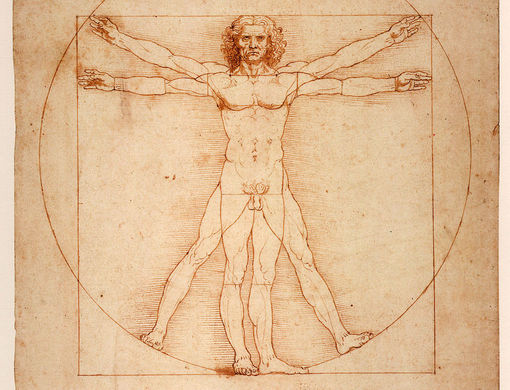
Vitruvian Man, Leonardo da Vinci
Fabricating part-human-part-nonhuman animals, with features of both, seemed like something out of Greek mythology until the late 20th century. New research then on “geeps,” fully developed, viable mixtures of goats and sheep, showed that constructing such “chimeras” was a real possibility. Still, the warning by H.G. Wells, a century before, in his novel “The Island of Dr. Moreau,” that scientific experiments like this could go terribly awry, seemed fantastical. But this will soon change. At the end of July, it was reported that the biologist Juan Carlos Izpisúa Belmonte, director of a laboratory at the Salk Institute in California, produced fetal human-monkey chimeras. He did this in collaboration with researchers in China. And this month the Japanese government is expected to give the go-ahead to scientist Hiromitsu Nakauchi, leader of teams at the University of Tokyo and Stanford University in California, to conduct similar experiments with the goal of bringing human-pig chimeras to full term. These novel forms of life will soon be among us.
Dr. Nakauchi acknowledges that the concerns of Wells and later writers like Aldous Huxley, author of “Brave New World” (1932), which similarly envisioned technologically calibrating degrees of humanness, are not farfetched. The art of getting the human cells to the right places in the composite animals is worse than imperfect, as are most manipulations of embryos. Developmental biology is simply not the kind of science that can guide an engineering program. Will the resulting mice and pigs have human consciousness? How this will be ascertained is not clear, but if they do Dr. Nakauchi assures us he will destroy them and stop the experiments.
The newly approved human-animal chimera procedures are just some of a number of scientifically and ethically questionable techniques that are being soft-pedaled and normalized on a daily basis by panels of experts advised by financially motivated bioentrepreneurs. In 1997, I applied for a patent on such part-human creatures. I had no intention of producing a chimera. But as a biologist whose work requires close tracking of the relevant scientific literature, I knew that part-human organisms could eventually be produced and that we were quickly approaching an era of deconstruction, reconfiguration, and commodification of human biology. The public deserved a heads-up.
The announcement of the chimera patent application in 1998 was met with derision and  accusations of bad faith by the then U.S. Patent Commissioner, and some biotechnology executives and scientists as well. The chair of genetics at Harvard Medical School, for example, asserted that “[t]he creation of chimeras is an outlandish undertaking. No one is trying to do it at present, certainly not involving human beings.” A little over two decades later, however, a once grotesque development has been normalized and approved by experts.
accusations of bad faith by the then U.S. Patent Commissioner, and some biotechnology executives and scientists as well. The chair of genetics at Harvard Medical School, for example, asserted that “[t]he creation of chimeras is an outlandish undertaking. No one is trying to do it at present, certainly not involving human beings.” A little over two decades later, however, a once grotesque development has been normalized and approved by experts.
In fact, there are numerous cases in the past four decades of interested parties playing down individual risk and potential societal impact of medically related procedures while making inflated promises based on the claimed novelty of the same methods. Advocates from the entrepreneurial side will often advertise prospective cures with oversimplifications that attribute undue power and singular action to favored (often patented) genes. From the scientific side there have been corner cutting in qualifying patients for treatments and misleading characterizations of the nature of and uncertainties around techniques to alter prospective humans.
An egregious example was one motivated by the understandable desire to avoid propagation of mitochondrial disease. It involved the renaming of the methods for transferring one woman’s egg cell nucleus (containing about 20,000 genes) into a second woman’s egg, leading to embryos constructed from cells of three persons. What was, essentially, a type of cloning was rebranded as “replacement of mitochondria” (involving only 23 genes). This procedure was sold on these deceptive terms to the people of the U.K., where it was approved and is now under way.
The “CRISPR” gene modification of embryos is the latest development being dealt with by expert panels. They will be the arbiters of when the technologically inevitable will occur. But any dispassionate consideration of the extreme nature of what these methodologies can produce should shake us into a realization that the public needs to be made aware of what is underway and have their voices heard on what will surely change our concept of human identity.